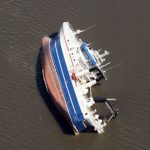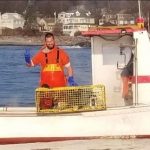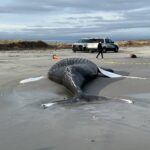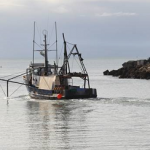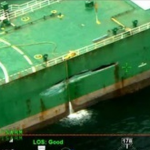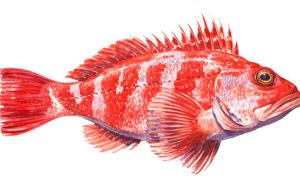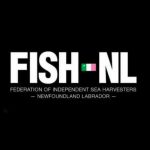Tag Archives: National Oceanic and Atmospheric Administration
AG’s suit targets NOAA fishing actions – “We will take it all the way to the Supreme Court, if necessary,”
![]() BOSTON — Representing the entire elected political leadership of Massachusetts, Attorney General Martha Coakley Thursday filed suit in U.S. District Court against the National Oceanic and Atmospheric Administration to block NOAA’s month-old commercial fishing restrictions, describing them as a “death penalty” for an industry which has been fishing legally and responsibly for years while successive waves of resource protection dragged the industry into an economic “disaster.” continued
BOSTON — Representing the entire elected political leadership of Massachusetts, Attorney General Martha Coakley Thursday filed suit in U.S. District Court against the National Oceanic and Atmospheric Administration to block NOAA’s month-old commercial fishing restrictions, describing them as a “death penalty” for an industry which has been fishing legally and responsibly for years while successive waves of resource protection dragged the industry into an economic “disaster.” continued
Bureaucratic miracle of cooperation saves sturgeon fishery – Why we must increase industry based collaberative research
21:20:25 – Ron Arnold – On Tuesday, the National Oceanic and Atmospheric Administration released a draft document called a “biological opinion” — more powerful than the nice name implies — that commercial fishing posed “no jeop ardy” to the endangered sturgeon in seven key Atlantic Coast areas. Why is that worth headlines? Because it’s extraordinary: Ultrapoliticized NOAA officials rarely fail to bludgeon commercial fishermen out of business with “jeopardy” findings based on virtually no information. continued
ardy” to the endangered sturgeon in seven key Atlantic Coast areas. Why is that worth headlines? Because it’s extraordinary: Ultrapoliticized NOAA officials rarely fail to bludgeon commercial fishermen out of business with “jeopardy” findings based on virtually no information. continued
Seven major Commercial Fisheries cleared by NOAA of harming or posing a threat to the iconic sturgeon
 fishnewsseu.com – A DRAFT Biological Opinion released by US National Oceanic and Atmospheric Administration (NOAA) today, found that seven existing commercial fisheries in New Jersey pose “no jeopardy” for Atlantic sturgeon. This determination, formalised by a Section 7 Consultation required under the federal Endangered Species Act (ESA), applies to the northeast multispecies, monkfish, spiny dogfish, Atlantic bluefish, northeast skate, squid/mackerel/butterfish, and summer flounder/scup/black sea bass fisheries. continued
fishnewsseu.com – A DRAFT Biological Opinion released by US National Oceanic and Atmospheric Administration (NOAA) today, found that seven existing commercial fisheries in New Jersey pose “no jeopardy” for Atlantic sturgeon. This determination, formalised by a Section 7 Consultation required under the federal Endangered Species Act (ESA), applies to the northeast multispecies, monkfish, spiny dogfish, Atlantic bluefish, northeast skate, squid/mackerel/butterfish, and summer flounder/scup/black sea bass fisheries. continued
A group of Hawaii fishermen want humpback whales off endangered list
Hawaii Fishermen’s Alliance for Conservation and Tradition Inc., a coalition of fishing clubs and groups from across the islands, filed a petition to the National Oceanic and Atmospheric Administration last month. There are more than 21,000 humpback whales in the North Pacific today, compared with about 1,400 in the mid-1960s. continued
NOAA Responds to Massachusetts legislators on cod, haddock, and yellowtail flounder: the answer is still no
Many legal observers, Members of Congress and elected officials disagree with that interpretation. Saving Seafood requested the legal opinion of the General Counsel under the Freedom of Information Act. The Department found 2![]() 9 pages of written material constituting the advice, but refused to release any of them under 5 U.S.C. § 552(b)(5), which exempts from disclosure inter-agency or intra-agency memorandums or letters that would not be available by law to a party other than an agency in litigation with the agency. Saving Seafood continues to ask the agency to explain their legal rationale in the face of such widespread disagreement from numerous legislators and lawyers with qualifications to comment. continued
9 pages of written material constituting the advice, but refused to release any of them under 5 U.S.C. § 552(b)(5), which exempts from disclosure inter-agency or intra-agency memorandums or letters that would not be available by law to a party other than an agency in litigation with the agency. Saving Seafood continues to ask the agency to explain their legal rationale in the face of such widespread disagreement from numerous legislators and lawyers with qualifications to comment. continued
Mass. AG urges easing of fish limits – request that President Obama “ask” the National Oceanic and Atmospheric Administration to institute lesser catch reductions
![]() Gov. Deval Patrick has been urged by Massachusetts Attorney General Martha Coakley to request that President Obama “ask” the National Oceanic and Atmospheric Administration to institute lesser catch reductions than are expected on Gulf of Maine cod and other stocks for the fishing year that begins May 1. continued
Gov. Deval Patrick has been urged by Massachusetts Attorney General Martha Coakley to request that President Obama “ask” the National Oceanic and Atmospheric Administration to institute lesser catch reductions than are expected on Gulf of Maine cod and other stocks for the fishing year that begins May 1. continued
IGFA join Pew Charitable Trusts in Call to Remove Longlines from Gulf of Mexico
The International Game Fish Association has long supported closing the Gulf of Mexico to surface longlines. But in an uncommon collaboration, this position is gaining new momentum as the National Oceanic and Atmospheric Administration (NOAA) prepares a new proposed regulation for the region as early as this month. IGFA has partnered with the American Bluefin Tuna Association and The Pew Charitable Trusts on this effort. continued
NOAA’s Fisheries Service Seeks Comments on Proposal to List Scalloped Hammerhead Sharks under Endangered Species Act
WASHINGTON, April 4 — The U.S. Department of Commerce’s National Oceanic and Atmospheric Administration issued the following news release: NOAA’s Fisheries Service, in response to a petition submitted by the WildEarth Guardians and Friends of Animals is proposing to list four populations of scalloped hammerhead sharks under the Endangered Species Act, two as threatened and two as endangered. continued
Is Fukushima Radiation Causing the Epidemic of Dead and Starving Sea Lions In California?
 At island rookeries off the Southern California coast, 45 percent of the pups born in June have died, said Sharon Melin, a wildlife biologist for the National Marine Fisheries Service based in Seattle. Normally, less than one-third of the pups would die. It’s gotten so bad in the past two weeks that the National Oceanic and Atmospheric Administration declared an “unusual mortality event.” That will allow more scientists to join the search for the cause, Melin said. Lots of interesting comments here! continued
At island rookeries off the Southern California coast, 45 percent of the pups born in June have died, said Sharon Melin, a wildlife biologist for the National Marine Fisheries Service based in Seattle. Normally, less than one-third of the pups would die. It’s gotten so bad in the past two weeks that the National Oceanic and Atmospheric Administration declared an “unusual mortality event.” That will allow more scientists to join the search for the cause, Melin said. Lots of interesting comments here! continued
What’s Behind Spike in Gulf Coast Dolphin Attacks? psst,,, they say it’s you fishermen. The psychologist’s weigh in.
 NatGeo – According to a December report by the National Oceanic and Atmospheric Administration (NOAA), in 2012 three dolphins with gunshot wounds were found “stranded” (or washed ashore) along the Gulf Coast—the highest number since 2004. continue reading
NatGeo – According to a December report by the National Oceanic and Atmospheric Administration (NOAA), in 2012 three dolphins with gunshot wounds were found “stranded” (or washed ashore) along the Gulf Coast—the highest number since 2004. continue reading
Dog in sea lion attack has clean record in Texas, necropsy results sent to fisheries service
 The daughter of former astronaut Mark Kelly was walking her dog Shiner on Goff Island Beach when the dog bolted, ripping the leash from her hand and fatally attacking a beached baby sea lion. The National Oceanic and Atmospheric Administration also does not expect to take legal action, spokesman Jim Milbury said. continue reading
The daughter of former astronaut Mark Kelly was walking her dog Shiner on Goff Island Beach when the dog bolted, ripping the leash from her hand and fatally attacking a beached baby sea lion. The National Oceanic and Atmospheric Administration also does not expect to take legal action, spokesman Jim Milbury said. continue reading
Auctions confirm renewed ‘uptick’ in cod – following its age-old pattern
![]() Both of Gloucester’s general fish auction houses are confirming reports by fishermen that cod — the fish that helped make this city the world’s oldest, most famous and, for a long time, its busiest fishing port — appears to be following its age-old pattern as it swims in increasing numbers into the shallow waters off Cape Ann. continue reading
Both of Gloucester’s general fish auction houses are confirming reports by fishermen that cod — the fish that helped make this city the world’s oldest, most famous and, for a long time, its busiest fishing port — appears to be following its age-old pattern as it swims in increasing numbers into the shallow waters off Cape Ann. continue reading
NOAA’s spending on itself is under attack by Senator “Mo” Cowan! YOU GO MO!
 WASHINGTON – The plight of New England’s groundfishing fleet was once again a topic on Capitol Hill on Tuesday as a Massachusetts senator questioned a federal official about how his agency is spending money that’s intended to help fishermen. But Sen. William “Mo” Cowan, D-Mass., pressed a top Department of Commerce official on the use of federal dollars by the National Oceanic and Atmospheric Administration. Cowan said that, according to his calculations, just $8 million of the $113 million available in 2010 through the Saltonstall-Kennedy Act program went to fisheries. That decades-old program uses fees on imported fish to provide grants or development projects to benefit the U.S. fishing industry. continued
WASHINGTON – The plight of New England’s groundfishing fleet was once again a topic on Capitol Hill on Tuesday as a Massachusetts senator questioned a federal official about how his agency is spending money that’s intended to help fishermen. But Sen. William “Mo” Cowan, D-Mass., pressed a top Department of Commerce official on the use of federal dollars by the National Oceanic and Atmospheric Administration. Cowan said that, according to his calculations, just $8 million of the $113 million available in 2010 through the Saltonstall-Kennedy Act program went to fisheries. That decades-old program uses fees on imported fish to provide grants or development projects to benefit the U.S. fishing industry. continued
Peña: Fishing remains a crucial engine for Ventura Harbor
![]() Ventura Harbor prides itself as one of the largest squid harbors on the West Coast — offloading California market squid, otherwise known and served most commonly as calamari. continue
Ventura Harbor prides itself as one of the largest squid harbors on the West Coast — offloading California market squid, otherwise known and served most commonly as calamari. continue
Coast Guard transports monk seal to Oahu for urgent care
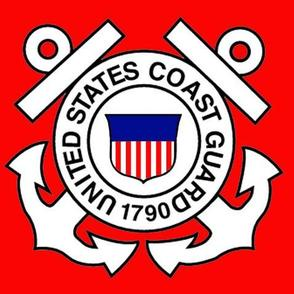 HONOLULU — Coast Guard crews, working with the National Oceanic and Atmospheric Administration transported a Hawaiian monk seal from the Big Island to Oahu for urgent medical care, Friday. The HC-130 Hercules airplane crew from Coast Guard Air Station Barbers Point, Oahu, received the seal at Kona International Airport, Kailua-Kona, Friday morning. Read more
HONOLULU — Coast Guard crews, working with the National Oceanic and Atmospheric Administration transported a Hawaiian monk seal from the Big Island to Oahu for urgent medical care, Friday. The HC-130 Hercules airplane crew from Coast Guard Air Station Barbers Point, Oahu, received the seal at Kona International Airport, Kailua-Kona, Friday morning. Read more
A desperate try to restock the Potomac’s sturgeon
 Believe it or not, there’s a Chesapeake Bay fish in even worse shape than the recovering striped bass, the troubled blue crab and even the imperiled bay oyster. The Atlantic sturgeon, pushed to the brink of extinction by overfishing and development, is little more than a memory in the Potomac River, ready for a spot in a museum. Read more, and treat yourself to the Wapo comments.
Believe it or not, there’s a Chesapeake Bay fish in even worse shape than the recovering striped bass, the troubled blue crab and even the imperiled bay oyster. The Atlantic sturgeon, pushed to the brink of extinction by overfishing and development, is little more than a memory in the Potomac River, ready for a spot in a museum. Read more, and treat yourself to the Wapo comments.
First stage of review of fish rulemaking released
 The inspector general started the investigation last year after requests from former U.S. Rep. Barney Frank and U.S. Rep. John Tierney. The lawmakers say rulemakers had forgotten their mandate to develop and involve the commercial fishing industry. Among the review’s findings: Financial disclosure by regional managers did little to increase transparency and record-keeping was inconsistent. Read more
The inspector general started the investigation last year after requests from former U.S. Rep. Barney Frank and U.S. Rep. John Tierney. The lawmakers say rulemakers had forgotten their mandate to develop and involve the commercial fishing industry. Among the review’s findings: Financial disclosure by regional managers did little to increase transparency and record-keeping was inconsistent. Read more
View the links to the report documents here
NOAA: 2012 was warmest year ever for US, second most ‘extreme’
I’m not a warmist, denier, skeptic, but I sure have a hard time believing anything NOAA.
If you found yourself bundling up in scarves, hats, and long underwear less than usual last year, you weren’t alone: 2012 was the warmest year on record in the contiguous United States, according to scientists with The National Oceanic and Atmospheric Administration. Read more
What’s next? NOAA warns large ships to avoid Olympic Coast National Marine Sanctuary
PORT ANGELES — The National Oceanic and Atmospheric Administration is asking ships of 400 gross tons or greater to stay farther away voluntarily from part of the Olympic Coast National Marine Sanctuary when traveling along the coast to protect the area from possible oil spills. Read More
Fishing regulators delay vote on catch cuts
The council voted 15-2 to delay a vote until its next meeting, Jan. 29-31. Proposed allocations for the year starting May 1 have been cut drastically, 75 percent for some species. A Groundfish Committee proposal that would have replaced those cuts with an across-the-board cut of 10 percent of the 2012 landings was declared out of order by council Chairman C. M. “Rip” Cunningham. He said it wouldn’t satisfy the requirements of the Magnuson-Stevens Act that governs fishing and could never be accepted by the National Oceanic and Atmospheric Administration. The proposal had already been sideswiped by Peter Shelley, senior counsel for the Conservation Law Foundation, for the same reason. He threatened a lawsuit, drawing boos from the packed hall where about 150 New England fishermen faced down the council. About 20 people from Greater New Bedford were among those in attendance.
Much of Thursday’s meeting dealt with the flawed science used to make quota decisions, especially the data collected by the research vessel Bigelow. Seafood consultant Jim Kendall, of New Bedford, along with council member John Quinn, of Dartmouth, ridiculed NOAA for making decisions with nothing but poor science, speculation and guesswork.
The Bigelow’s data on yellowtail flounder has resulted in a dramatic cut in quota for next year, which could well shut down the Gulf of Maine fishery. But the fishermen insisted the Bigelow was taking test trawls in places where they knew there would be no fish and avoided the places where there were fish.
The council did adopt a motion to allow fishing in some areas that have been closed to groundfishing for 22 years. This angered the environmental representatives, both Shelley and Oceana’s Gib Brogan. Read More
Predator, prey balance needed in fisheries management Carmine Gorga, Ph.D.
To the editor:
Congratulations to Matt Mullin, deputy regional director, New England Oceans Program, Environmental Defense Fund! He is the first member of the fisheries “establishment” who has publicly admitted to the need to account for the “predator and prey balance” (Letter, the Times, Nov, 14). This is a very important communication.
There is now hope that sooner or later even the National Oceanic and Atmospheric Administration and its National Marine Fisheries Service will eventually look at stocks of fish as existing in a web of interrelationships with each other, rather than in linear formation as they were depicted in ancient biology books. There is now hope that overfishing will no longer be attributed to the pitiful family fishing fleet!
Just imagine a world in which NOAA and NMFS acknowledge their boundaries, a world in which they leave the family fishing fleet alone. A world in which they get up the gumption to go after the large, often subsidized, national and international corporations, at times culprits for the devastation of the fisheries. Just imagine a world in which NOAA and NMFS call for a balanced management of pelagics (mid-water fish) and bottom fish!
Carmine Gorga, Ph.D.
Middle Street,
Gloucester
Presidential race radar never hit fishing crises
The crisis threatening the survival of Gloucester and other East Coast fishing communities — which have declined into officially declared disaster during the last four years — has not registered a blip during the 2012 national election campaign, even as voters go to the polls today. Neither Mitt Romney nor President Obama has paid a whit’s attention to an $331 million industry, though Obama has given silent support to his team at NOAA Fisheries, headed by Jane Lubchenco, over calls for her ouster from several fedral lawmakers. http://www.gloucestertimes.com/topstories/x121541642/Presidential-race-radar-never-hit-fishing-crises
Court tries to tally money stolen from whaling commission – More Tails of the AFF Travel Fund?
Federal prosecutors said a former director of the Alaska Eskimo Whaling Commission, who pleaded guilty in May to stealing commission funds, spent some of the more than $420,000 she embezzled on her and her husband’s gambling. “Some of the money is money that was consistent with (the commission’s) purpose but not technically approved by a particular grant,” Fitzgerald said. But Ahmaogak and her husband, former North Slope Borough Mayor George Ahmaogak, spent thousands of dollars gambling at casinos in the Caribbean, New Orleans and Las Vegas, according to Internal Revenue Service Special Agent Clinton Wight, who testified Wednesday. Maggie Ahmaogak made cash withdrawals with the commission’s credit card and received fraudulent reimbursements for hotel rooms or plane tickets during or just after the trips, which were paid for by the commission or the National Oceanic and Atmospheric Administration, Wight said.
Now We’re Talkin”! Iron sprinkling project by a “messing around, bumbling guy,” spawned the growth of enormous amounts of plankton. NOAA provided 20 instrument-laden buoys, Claims the agency had been “misled”.
I love this! The scientific community and the econuts are OUTRAGED! Outraged I tell ya! You tell me what you think. Leave a comment.
A California businessman chartered a fishing boat in July, loaded it with 100 tons of iron dust and cruised through Pacific waters off western Canada, spewing his cargo into the sea in an ecological experiment that has outraged scientists and government officials. The entrepreneur, whose foray came to light only this week, even duped the National Oceanic and Atmospheric Administration in the United States into lending him ocean-monitoring buoys for the project. The iron spawned the growth of enormous amounts of plankton, which Mr. George, a former fisheries and forestry worker, said might allow the project to meet one of its goals: aiding the recovery of the local salmon fishery for the native Haida.
Chesapeake Bay Foundation Continually Misrepresents Status of Menhaden – using biased phrasing in their articles
In reference to menhaden, both articles uses the phrase “the most important fish in the sea,” which is frequently used without proper explanation. Originating from Rutgers University English Professor, Dr. H. Bruce Franklin’s book, The Most Important Fish in the Sea, the phrase stems from entirely qualitative judgements made by the author. There is no scientific evidence supporting the hyperbolic statement that any one species of fish is “most important,” and promulgating this idea represents only the authors’ opinion, rather than any scientific consensus.
Although the Epes article states that “The Chesapeake Bay Foundation is pushing for fair and reasonable limits to rebuild the menhaden population,” the organization does not provide a similar description of the status of the menhaden stock, using biased phrasing in their articles to make the species seem in worse condition than it actually is.






 The Miami Herald >When the National Oceanic and Atmospheric Administration hosts its upcoming Washington summit May 7-9 on the future of U.S. fisheries, it will mark the first step in the effort to again reauthorize the Magnuson-Stevens Act. This meeting of stakeholders at Managing Our Nation’s Fisheries III
The Miami Herald >When the National Oceanic and Atmospheric Administration hosts its upcoming Washington summit May 7-9 on the future of U.S. fisheries, it will mark the first step in the effort to again reauthorize the Magnuson-Stevens Act. This meeting of stakeholders at Managing Our Nation’s Fisheries III 



























